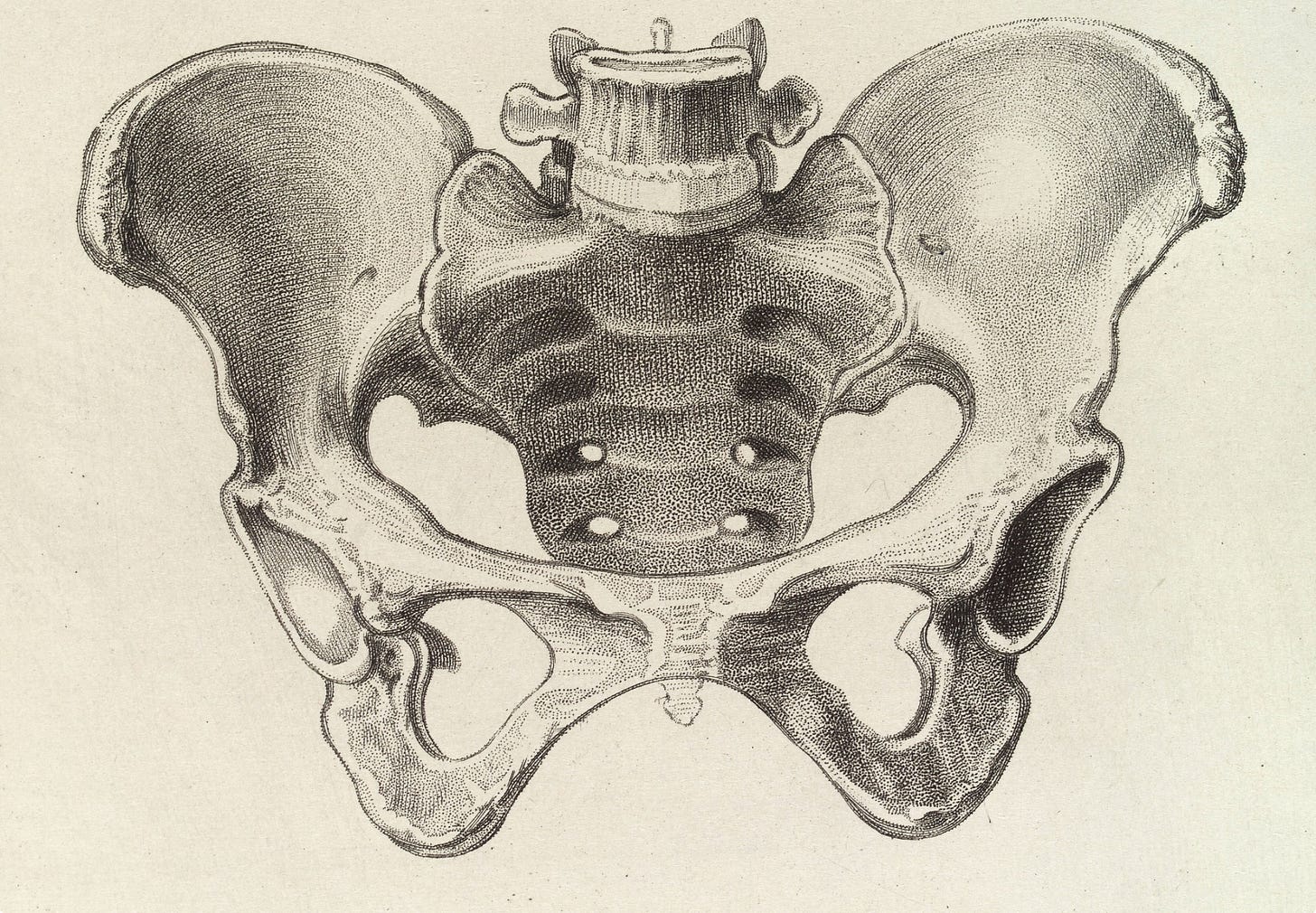Pelvic floor dysfunction, defined as dysfunction of the musculature forming a diaphragm or outlet at the bottom of the pelvis, has largely been studied due to its affect on incontinence and women’s health. However, we all have pelvic floor musculature and incontinence is not the only, not even the most widespread symptom of pelvic floor dysfunction. SI joint (sacroiliac joint) and low back pain, due to pelvic floor dysfunction is very common among males and females of all ages.
Ironically, being in better shape or having a stronger core does not necessarily protect one from this dysfunction. Active individuals with SI joint or low back pain often have pelvic floor dysfunction due to the fact that their sport and/or fitness routine feeds into the postural patterns that lead to pelvic floor dysfunction. If you are experiencing pain around your pelvis or low back, pelvic floor musculature function is that critical piece of the puzzle that must be evaluated to reveal its impact on both your SI joint and lumbar spine.
Both the pelvic inlet and outlet musculature comprise the pelvic floor complex. The pelvic outlet consists of muscles that form a diaphragm (think bowl) at the bottom of your pelvis and sacrum. Additional musculature, known collectively as the pelvic inlet connects the pelvis with the femurs (thighs) and originates at the top of the pelvis. This complex of muscles have the biggest impact on pelvic and sacral position, and thus the biggest influence on wether or not you suffer from pain in this region.
A healthy, functional pelvic floor complex is one that can move our pelvis in and out of different positions enabling us to walk, run, navigate stairs and just stand around as needed. Problems arise when our physical habits create compensatory patterns that lock us into postures that limit our pelvic movement options. Our muscles adapt to these postures, some growing relatively long and weak while others become short and over-active. When this imbalance happens in the pelvic floor complex, the orientation of the pelvis, sacrum and lumbar spine are less than optimal and the joints connecting these bones begin to degrade.
A common postural dynamic I observe in patients is an excessive anterior pelvic tilt. Think of the pelvis as bowl full of water. If you tilt the bowl forward(anterior), water spills out. When the pelvis is tilted forward on both the left and right side, you have some relatively tight hip flexors, but also some relatively under-active hamstrings as compensations. We can activate and inhibit that musculature as needed. But what to do about the pelvic floor pattern that locks you into this posture? The anterior pelvic floor in the anteriorly tilted posture is very likely shortened, and held in an over-active position. The posterior pelvic floor will be held in a lengthened, under active position.
Because the respiratory diaphragm movements mirror the pelvic floor movement, those with an anteriorly tilted pelvis have an anteriorly flared ribcage, and a flattened ribcage at the mid-back. In other words the ribs and anterior pelvic floor are held in a position of relative inhalation. We want the pelvis, ribs and accompanying musculature to be able to move into, through and out of inhalation and exhalation with every breath and step we take.
To unwind this knot of muscular imbalance we have to begin at the pelvic floor with exercises that will inhibit the anterior musculature and activate the posterior musculature. This will allow the pelvis to move to a neutral position and then assume a posterior pelvic tilt. At the same time we have to increase the internal rotation range of motion of our anterior ribs, enhancing respiration. We can use the bigger muscle of the thighs and abdomen to reposition the pelvis and ribcage. Once the pelvis is held in a new posture, the muscles of the pelvic floor respond to this position and will contract or relax appropriately.
Lumbar Spine Flexion with Lower Rib Depression
The exercise for this postural dysfunction is simpler than the explanation. Lay on your back with your knee bent and your feet flat on 2-3 inch object like a book. Take a long inhale through your nose, 5 seconds. Exhale through your nose pushing the air out gently with your abdominals feeling this musculature pull your ribs down and in towards your belly button. At the end of the exhale, gently hold your abdominal contraction and inhale feeling the air push into your sides and back. On the next exhale, without moving your feet, gently dig in with your heels pulling them towards your butt. You should feel the back of your thighs(hamstrings) engage, pulling your pelvis into a posterior tilt. At the end of this exhale hold onto that gentle abdominal and hamstring contraction. Do this for 3 sets of 1 min, a couple times a day.
Of course a deeply imbedded posture cannot be undone with one exercise, but this the place to start. Additionally, there other compensatory postures that contribute to pelvic floor dysfunction that should be addressed with different exercises. Ultimately, we want to coordinate your pelvic and respiratory diaphragm to ascend and descend together and in conjunction with both your breathing and locomotion. To do this effectively will require a thorough evaluation and a series of progressive exercises. If you have any questions or would like to schedule either a phone consultation or in-person interview please contact my office or visit my website, www.returntosportphysio.com.


